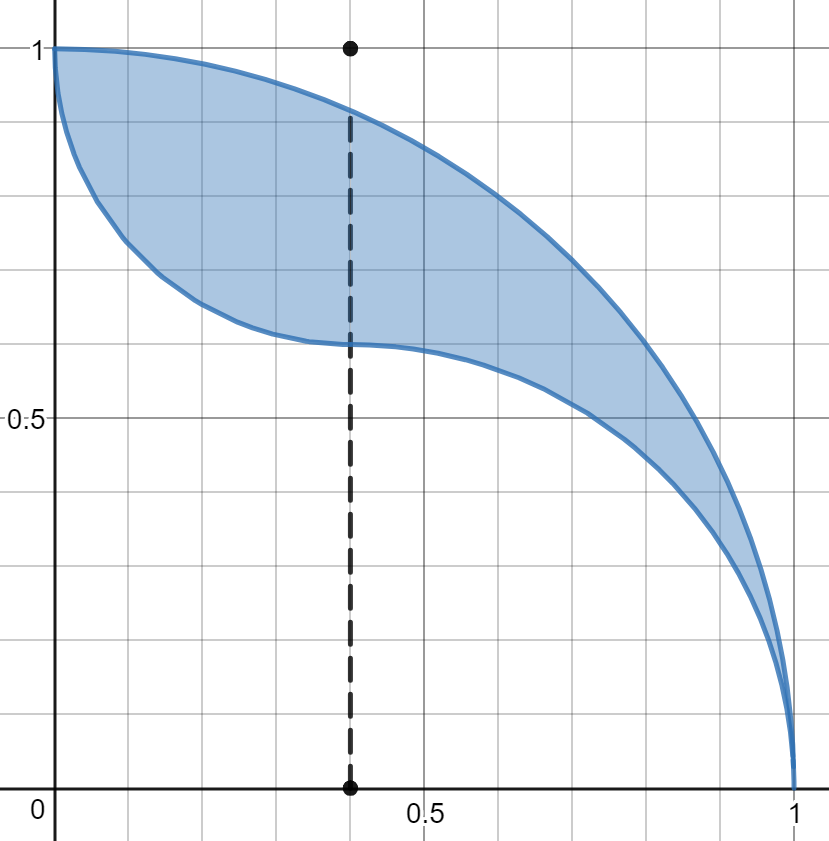3 arcs
Three quarter-circle arcs enclose an area as shown.

The largest is part of a unit circle, the smaller two are of a size that varies by a parameter . The vertical line is . The arc to the left of this line has radius and to the right radius .
The area of the figure is smallest when and largest when .
When is increased at a constant rate from to , when does the area increase most quickly?
This section requires Javascript.
You are seeing this because something didn't load right. We suggest you, (a) try
refreshing the page, (b) enabling javascript if it is disabled on your browser and,
finally, (c)
loading the
non-javascript version of this page
. We're sorry about the hassle.
The shape is the sum of two arcs less a third. All the arcs are similar so their areas are in proportion to 1 2 , a 2 , and ( 1 − a ) 2
1 + a 2 − 1 − a 2 = 2 a so the area increases linearly with a . In other words it is Always constant
You can play with the picture via this link: https://www.desmos.com/calculator/pw7c298i0s